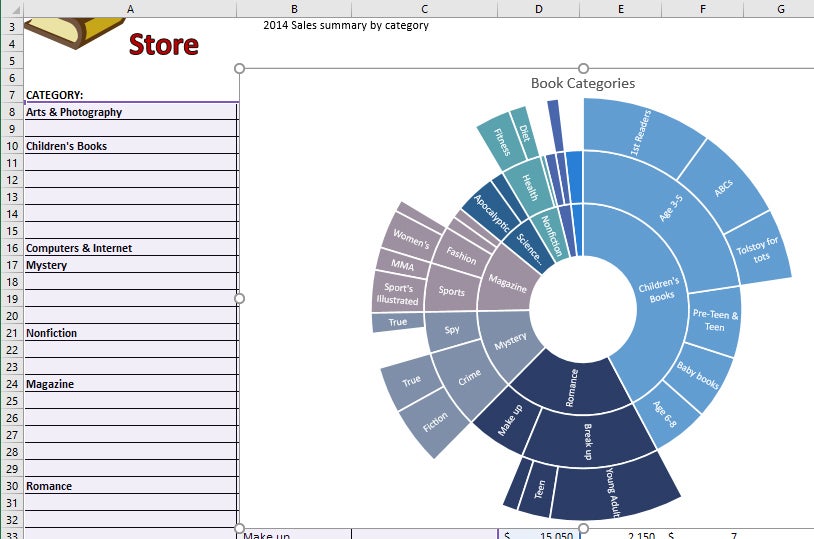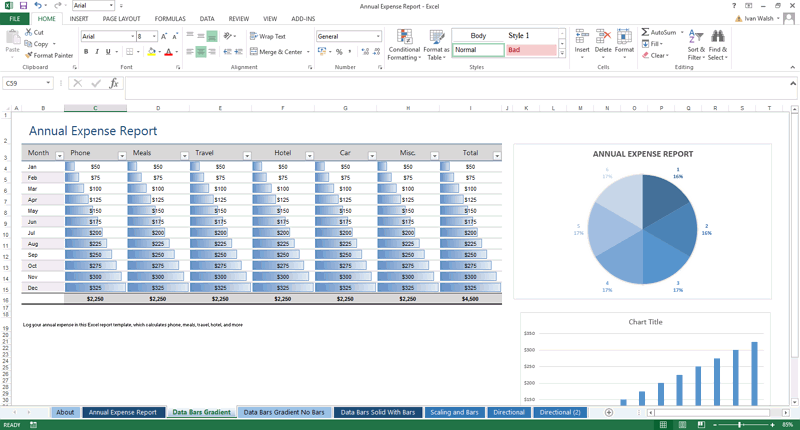

You can base your chart on this data and Excel will ignore the #N/A values.
#Excel chart text data series#
You then end up with a series of readings for all weekdays the weekends show #N/A for the reading. In each cell of column C you could place the following formula: Assume, for a moment, that your readings are in column A and the dates of those readings are in column B. You could then use the named range in your chart, as a reference to the source data.įinally, if you don't mind adding another column to your data, you could use the new column for your chart source. To add a chart to an Excel spreadsheet, follow the steps below: Step-1: Open MS Excel and navigate to the spreadsheet, which contains the data table you want to use for creating a chart. Let’s reapproach our example with that in mind. Often, the real story doesn’t lie in all the numbers in the chart, but it’s hidden in a few key data points. First, to build a line chart, select the data, and then select the requisite line chart option as shown below. See Format and customize Excel 2013 charts quickly with the new Formatting Task pane for more discussion about the Formatting Task Pane in general. in this case, we have quarter wise data for two cities, and we shall compare the sales trend over the quarters for these two cities. You could also create a named range that refers to the non-contiguous ranges you want included in the chart. This chart is useful for observing trends. Enhance them with formatting and additional freeform text. You could, within the chart, set the data range for the source data to this: Include rich and refreshable text from data points or any other text in your data labels. Assume, for a moment, that your data was in A1:B15, and that there were weekends in rows 7, 8, 14, and 15. In Data Source table, vlookup up Order from Mapping Table, we are going to use this Order value as x-axis value instead of using Grade. 2) a mapping table indicating the desired order in X-axis. To group Grade text (ordinal data), prepare two tables: 1) Data source table. It may be better to base your chart on a non-contiguous data range. Solution Excel scatter chart using text name.

The drawback to this, of course, is that it creates two sets of data that may need to be updated or kept in sync in some way. You would still have your master data for whatever purposes you need, but you could base your chart on the modified copy of that data. One is to simply make a copy of your data (maybe copy the whole worksheet) and then delete the rows that contain weekend data. There are a couple of ways you could approach this problem. In other words, she wants them displayed in the data table, but not in the chart. She knows that she could hide the rows and they would be excluded from the chart, but she still needs the hidden rows to be displayed in the table. The data includes weekends, but Pam doesn't want the weekend data included in the chart.

The data was collected from information generated on her company's shop floor. Pam keeps a month's worth of data in a table and created a chart based on that data. Formula One for Java creates the text for the data labels based on the data in the charts data range.


 0 kommentar(er)
0 kommentar(er)
